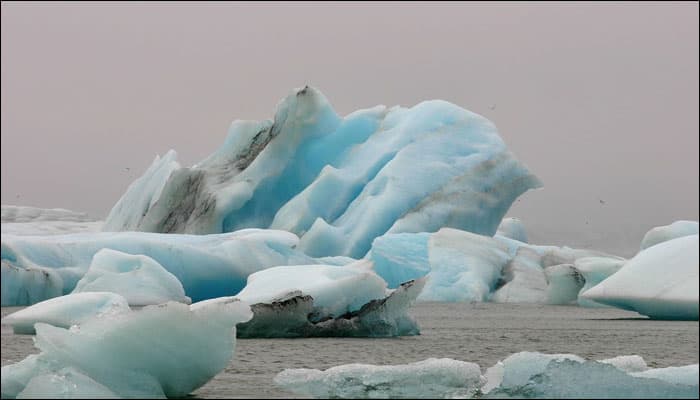New Delhi: In the second incident of its kind in two years, an iceberg over 250 square kilometres in size has broken off from an enormous Antarctic glacier.
The Pine Island Glacier is one of the largest in West Antarctica and loses 45 billion tonnes of ice to the ocean each year – equivalent to one millimeter of global sea level rise every eight years.
The single glacier alone contains 1.7 feet of potential global sea level rise and is thought to be in a process of unstable, ongoing retreat.
Stef Lhermitte, a satellite observation specialist at Delft University of Technology in the Netherlands, posted a satellite image showing that Pine Island had broken off a piece of ice about 266 square kilometres in area.
The rectangular piece of ice then appears to have lost some of its shape immediately as smaller pieces splintered off.
"It is the fifth large calving event since 2000. This one and 2015, they were much further inland than the previous ones. So there has been a retreat of the calving front, specifically between 2011 and 2015," Lhermitte said.
Researchers at NASA and with another team of scientists studying Pine Island of Ohio State University in the US also confirmed the findings, 'The Washington Post' reported.
Last year, researchers had found that Pine Island Glacier developed a new way of losing ice, with rifts forming in the center of its floating ice shelf from beneath, rather than at the sides, the traditional manner.
This may be a function of warmer ocean waters reaching the base of the glacier and weakening it, they said.
"We predicted that the rifting would result in more frequent calving, which is what's happening here. If new rifts continue to form progressively inland, the significance to ice shelf retreat would be high," said Ian Howat of Ohio State University.
The ice at the Arctic and Antarctic regions has long since been under scientists' radar and has been losing ice at a rapid pace.
In July this year, a trillion tonne iceberg, dubbed A68, separated completely from the Antarctic Peninsula's Larsen C ice shelf and drifted out into the sea.
(With PTI inputs)
















